
How to Use 12v 7ah Battery: Examples, Pinouts, and Specs
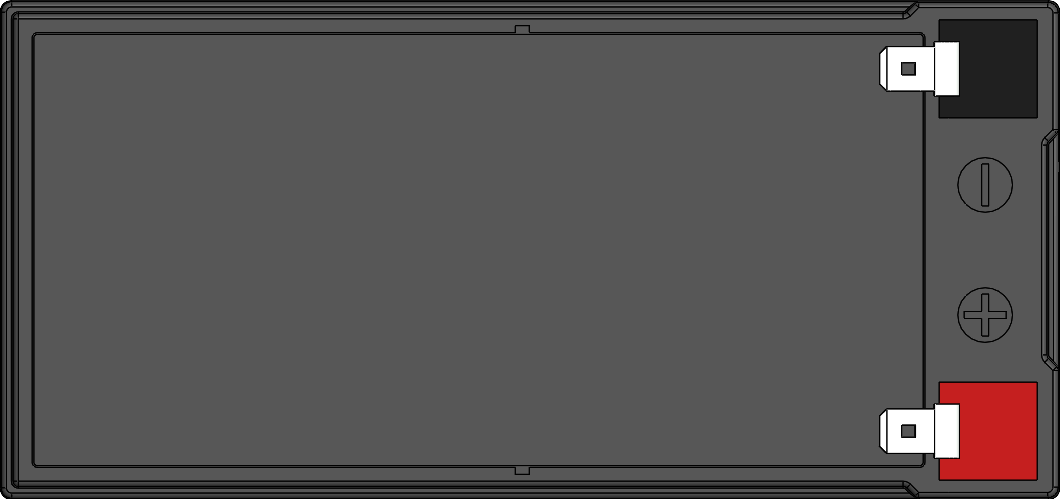
 Design with 12v 7ah Battery in Cirkit Designer
Design with 12v 7ah Battery in Cirkit DesignerIntroduction
The 12V 7Ah battery is a sealed lead-acid (SLA) rechargeable battery that provides a reliable power source for a wide range of electronic devices and systems. With a nominal voltage of 12 volts and a capacity of 7 ampere-hours, this battery is capable of delivering sustained power over an extended period. It is commonly used in applications such as emergency lighting, alarm systems, uninterruptible power supplies (UPS), solar power storage, and backup power for various electronic devices.
Explore Projects Built with 12v 7ah Battery
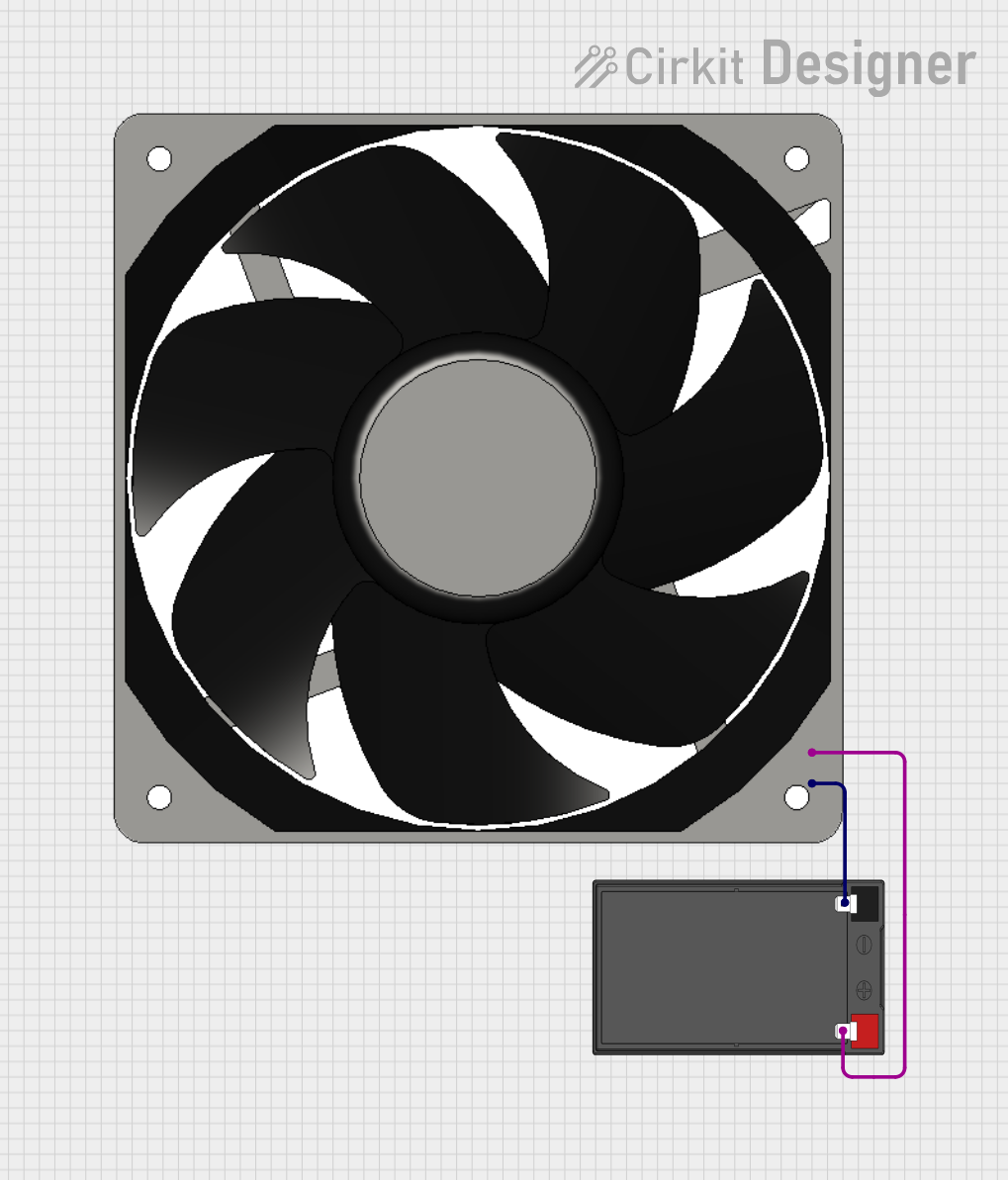
 Open Project in Cirkit Designer
Open Project in Cirkit Designer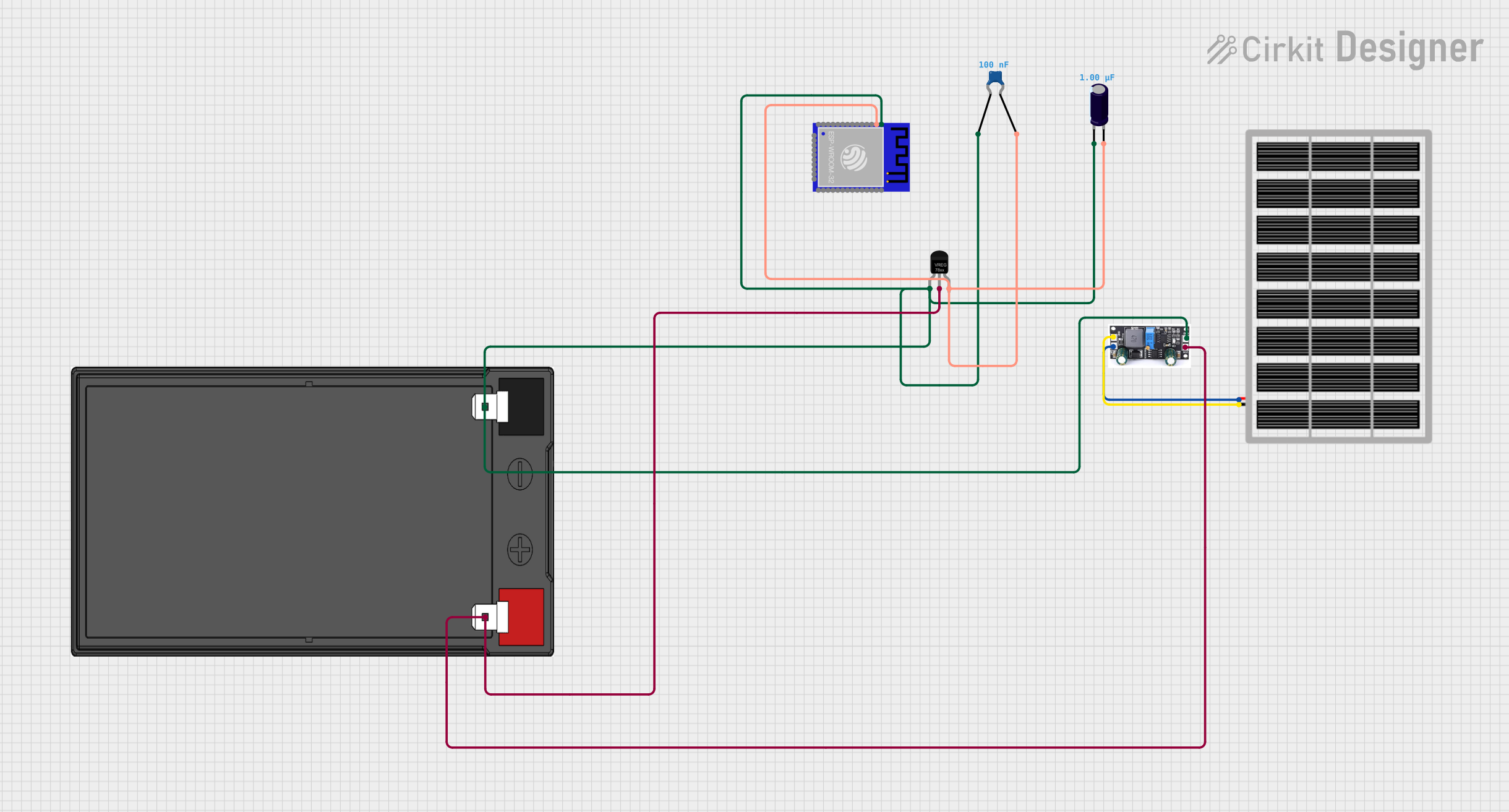
 Open Project in Cirkit Designer
Open Project in Cirkit Designer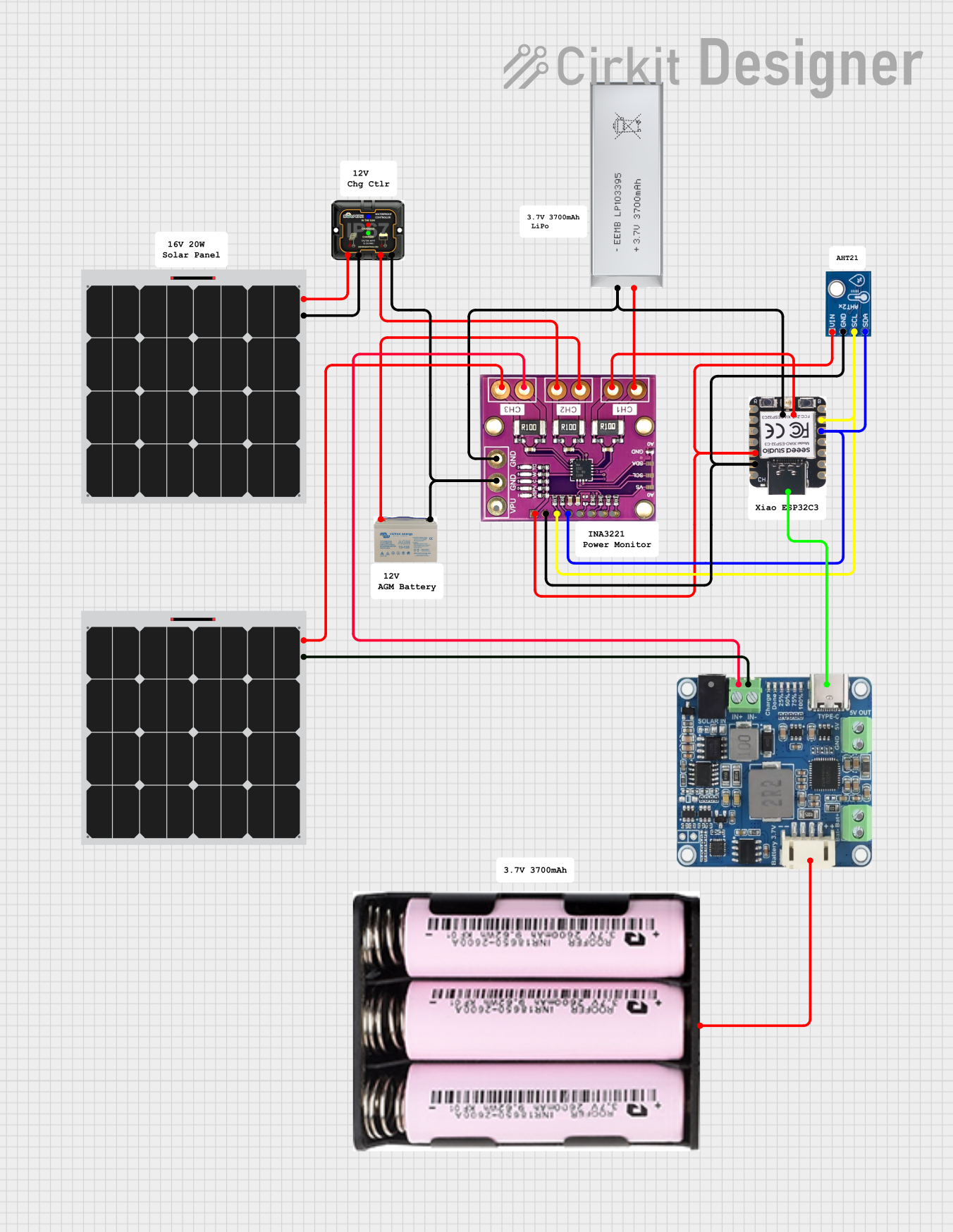
 Open Project in Cirkit Designer
Open Project in Cirkit Designer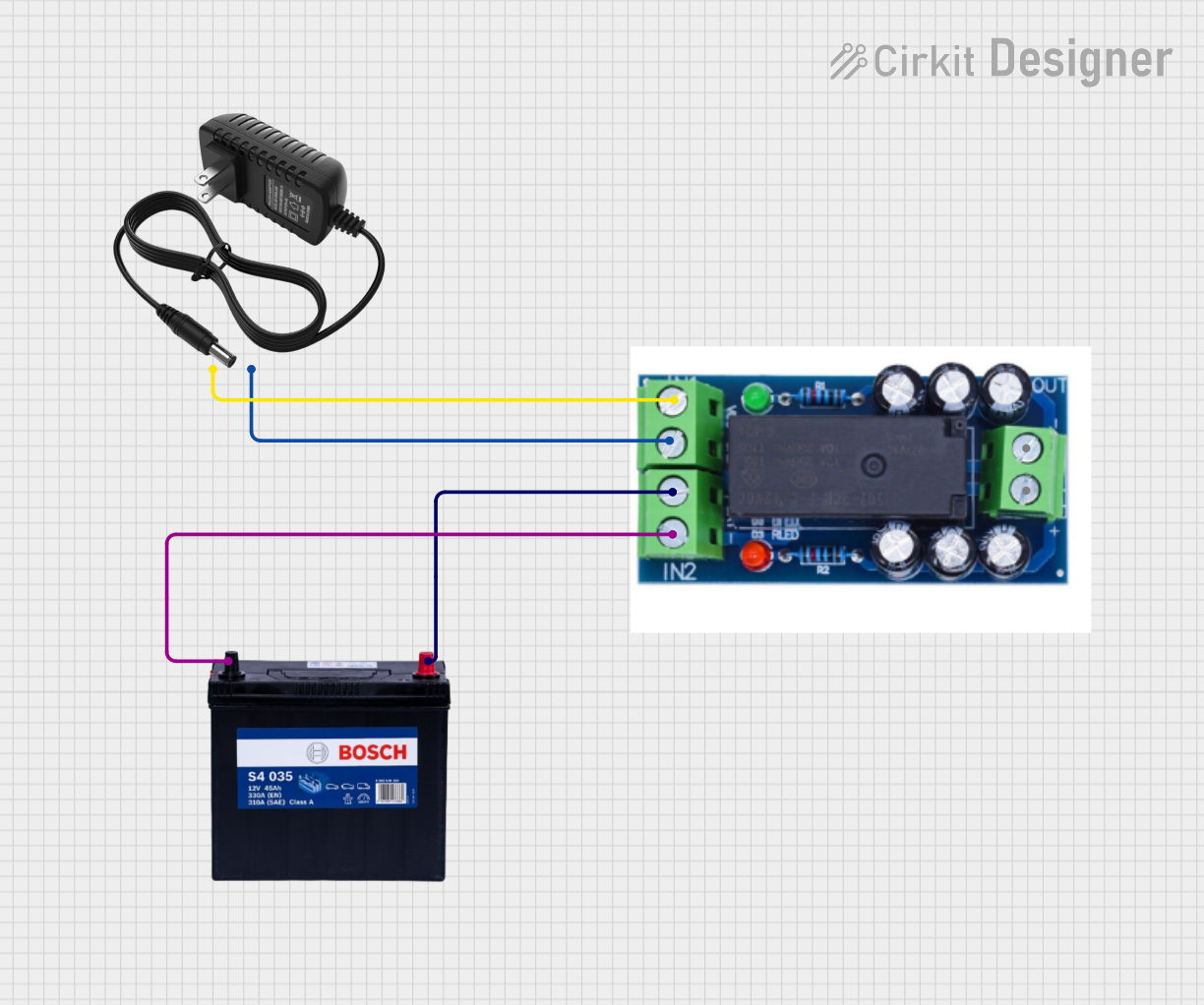
 Open Project in Cirkit Designer
Open Project in Cirkit DesignerExplore Projects Built with 12v 7ah Battery

 Open Project in Cirkit Designer
Open Project in Cirkit Designer
 Open Project in Cirkit Designer
Open Project in Cirkit Designer
 Open Project in Cirkit Designer
Open Project in Cirkit Designer
 Open Project in Cirkit Designer
Open Project in Cirkit DesignerTechnical Specifications
General Characteristics
- Nominal Voltage: 12V
- Rated Capacity: 7Ah
- Type: Sealed Lead-Acid (SLA)
- Chemistry: Lead-Acid
- Terminal Type: F1/F2 (Faston tabs)
- Weight: Approximately 2.5 kg (5.5 lbs)
- Dimensions: Typically around 151mm x 65mm x 94mm (Length x Width x Height)
Electrical Specifications
| Parameter | Specification |
|---|---|
| Nominal Voltage | 12V |
| Nominal Capacity | 7Ah |
| Maximum Charging Voltage | 14.4 - 15.0V |
| Float Charging Voltage | 13.6 - 13.8V |
| Maximum Charging Current | 2.1A (30% of Rated Capacity) |
| Energy Density | Approx. 84 Wh/kg |
| Self-Discharge Rate | <3% per month at 25°C |
Usage Instructions
Charging the Battery
- Charger Compatibility: Use a charger specifically designed for 12V lead-acid batteries.
- Charging Voltage: Ensure the charger's voltage settings are within the battery's specified charging voltage range.
- Charging Current: Do not exceed the maximum charging current of 2.1A to prevent overheating and damage.
- Monitoring: Regularly monitor the battery voltage and temperature during charging.
Installing the Battery
- Orientation: Install the battery in an upright position to prevent leakage.
- Connection: Ensure proper polarity when connecting the battery to your system. The positive terminal is usually marked with a plus (+) sign.
- Securing: Secure the battery in place to prevent movement that could loosen connections.
Maintenance and Safety
- Storage: Store the battery in a cool, dry place and recharge it every six months during prolonged storage.
- Handling: Avoid short-circuiting the terminals. Use insulated tools to prevent accidental contact.
- Inspection: Regularly inspect the battery for signs of damage or leakage.
Troubleshooting and FAQs
Common Issues and Solutions
- Battery won't charge: Ensure the charger is functioning and set to the correct voltage. Check for loose connections.
- Reduced capacity: Perform a few charge/discharge cycles to refresh the battery. If the issue persists, the battery may need replacement.
- Swollen battery case: This is often a sign of overcharging or internal damage. Replace the battery and check the charging system.
FAQs
Q: Can I use this battery for high-drain devices? A: The 12V 7Ah battery is not designed for high-drain applications. It is best suited for devices that require a steady, low current over a long period.
Q: How long will the battery last on a single charge? A: This depends on the load. For example, a device drawing 1A will typically run for about 7 hours (7Ah / 1A = 7 hours).
Q: Is it necessary to fully discharge the battery before recharging? A: No, lead-acid batteries do not have a memory effect and can be recharged at any state of discharge.
Q: How do I dispose of the battery? A: Lead-acid batteries should be recycled according to local regulations. Do not dispose of them in regular trash.
Example Code for Battery Monitoring with Arduino UNO
// This example demonstrates how to monitor a 12V 7Ah battery voltage using an Arduino UNO.
const int analogPin = A0; // Analog pin connected to voltage divider output
const float referenceVoltage = 5.0; // Reference voltage for Arduino UNO (5V)
const float dividerRatio = 4.0; // Voltage divider ratio (if using a 3:1 divider)
void setup() {
Serial.begin(9600); // Start serial communication at 9600 baud
}
void loop() {
int sensorValue = analogRead(analogPin); // Read the analog input
float batteryVoltage = (sensorValue * referenceVoltage / 1023.0) * dividerRatio;
// Calculate the battery voltage
Serial.print("Battery Voltage: ");
Serial.print(batteryVoltage);
Serial.println(" V");
delay(1000); // Wait for 1 second before the next reading
}
Note: The code above assumes the use of a voltage divider to step down the 12V battery voltage to a safe level for the Arduino analog input. The dividerRatio should be adjusted based on the actual resistors used in the voltage divider circuit.
Remember to always follow safety precautions when working with batteries and electronics. This documentation is provided for informational purposes and should be used by individuals with the appropriate technical knowledge.